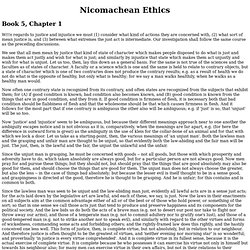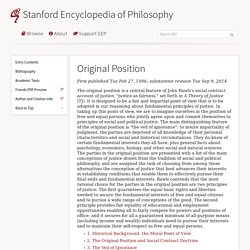

Www.jstor.org/stable/pdfplus/2672834.pdf?acceptTC=true. Justice. Lady Justice depicts justice as equipped with three symbols: a sword symbolizing the court's coercive power; a human scale weighing competing claims in each hand; and a blindfold indicating impartiality.[1] Concept[edit] Studies at UCLA in 2008 have indicated that reactions to fairness are "wired" into the brain and that, "Fairness is activating the same part of the brain that responds to food in rats... This is consistent with the notion that being treated fairly satisfies a basic need".[7] Research conducted in 2003 at Emory University involving capuchin monkeys demonstrated that other cooperative animals also possess such a sense and that "inequity aversion may not be uniquely human"[8] indicating that ideas of fairness and justice may be instinctual in nature.
Understandings[edit] Social justice. Social justice is the ability people have to realize their potential in the society where they live.[1] Classically, "justice" (especially corrective justice or distributive justice) referred to ensuring that individuals both fulfilled their societal roles,[2] and received what was due from society.

"Social justice" is generally used to refer to a set of institutions which will enable people to lead a fulfilling life and be active contributors to their community.[3] The goal of social justice is generally the same as human development, and the relevant institutions are usually taken to include education, health care, social security, labour rights, as well as a broader system of public services, progressive taxation and regulation of markets, to ensure fair distribution of wealth, equality of opportunity, and no gross inequality of outcome. History[edit] The different concepts of justice, as discussed in ancient Western philosophy, were typically centered upon the community. Justice and Fairness. Justice and Fairness Developed by Manuel Velasquez, Claire Andre, Thomas Shanks, S.J., and Michael J.

Meyer When Beatrice Norton was fourteen, she followed in her mother's footsteps and began working in the cotton mill. In 1968, after a career in the mill, she had to stop working because of her health. Aristotle: Nichomachean Ethics. Book 5, Chapter 1 WITH regards to justice and injustice we must (1) consider what kind of actions they are concerned with, (2) what sort of mean justice is, and (3) between what extremes the just act is intermediate.

Our investigation shall follow the same course as the preceding discussions. Justice as Fairness. Self-determination theory. In the 1970s, research on SDT evolved from studies comparing the intrinsic and extrinsic motives, and from growing understanding of the dominant role intrinsic motivation played in an individual’s behavior[2] but it was not until mid-1980s that SDT was formally introduced and accepted as a sound empirical theory.

Research applying SDT to different areas in social psychology has increased considerably since the 2000s. Key studies that led to emergence of SDT included research on intrinsic motivation.[3] Intrinsic motivation refers to initiating an activity for its own sake because it is interesting and satisfying in itself, as opposed to doing an activity to obtain an external goal (extrinsic motivation). Different types of motivations have been described based on the degree they have been internalized. Internalization refers to the active attempt to transform an extrinsic motive into personally endorsed values and thus assimilate behavioural regulations that were originally external.[4] Original Position. 1.

Historical Background: the Moral Point of View The idea of a moral point of view can be traced back to David Hume's account of the “judicious spectator.” Hume sought to explain how moral judgments of approval and disapproval are possible given that people normally are focused on achieving their particular interests. He conjectured that in making moral judgments individuals abstract in imagination from their own particular interests and adopt an impartial point of view from which they assess the effects of others' actions on the interests of everyone. Since, according to Hume, we all can adopt this impartial perspective in imagination, it accounts for our agreement in moral judgments.